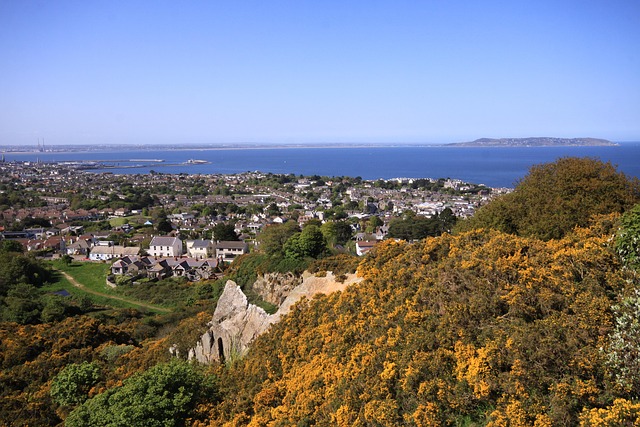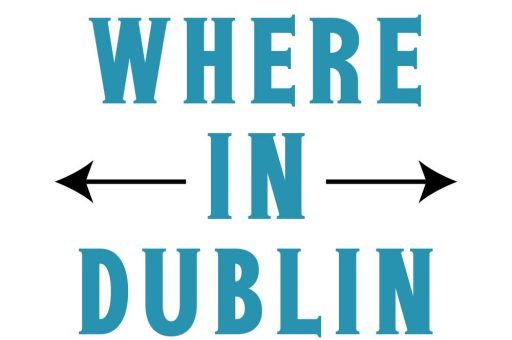
Exploring Dublin isn’t just about its bustling streets, historic castles, and lively pubs. The true beauty lies in its coastline, where cliffs stretch dramatically over the Irish Sea. For anyone seeking adventure, nature, and breathtaking views, Dublin’s cliffs are a perfect escape. From my own personal experience, taking a tour along these cliffs offers a mix of quiet reflection, fresh air, and stunning photo opportunities.
If there’s a goal for your trip to Dublin, it should be to experience these cliffs from multiple angles. That’s why creating a touring route map is essential. In this guide, I’ll break down the best Dublin cliff touring routes, practical tips for making the most of your visit, and ideas to expand your adventure across the region.
Why Touring Dublin’s Cliffs Is a Must
Dublin’s cliffs offer a unique combination of accessibility and natural beauty. Unlike some remote cliff locations, these routes are well-maintained, safe for all skill levels, and provide plenty of hidden gems along the way. You can combine a cliff walk with a beach stop, historical site visits, or even a scenic drive through the countryside.
One of the best parts of touring Dublin’s cliffs is that it’s flexible. You can spend a few hours on a single route or dedicate a full day to explore multiple cliffs. Based on my overall experience, planning the route with a map in hand makes the journey smoother and ensures you won’t miss iconic spots.
Essential Tips for Planning Your Cliff Tour
Before diving into specific routes, here are some tips to make your tour enjoyable and safe:
Check the Weather: Dublin weather can change rapidly. Dress in layers and bring waterproof gear, even if the forecast looks clear.
Wear Proper Footwear: Trails can be rocky or slippery. Sturdy hiking shoes or boots are a must.
Start Early: Early mornings are less crowded and offer better light for photography.
Bring Snacks and Water: Some routes take hours, and not all have nearby facilities.
Use a Map: Download an offline map or use a GPS app. A cliff touring route map helps plan stops, viewpoints, and side trails.
Respect Nature: Stick to marked trails and avoid disturbing wildlife or plant life.
Top Dublin Cliff Routes
1. Howth Cliff Walk
One of the most famous cliff walks near Dublin, the Howth Cliff Walk is perfect for both beginners and seasoned hikers. The loop trail stretches roughly 6 kilometers and features dramatic cliffs, small beaches, and panoramic views of Dublin Bay.
From my own personal experience, the walk is best when starting from Howth Harbour. The path gradually climbs, giving plenty of opportunities to capture photos of the lighthouse and the harbor below. Along the way, you’ll pass charming villages, local pubs, and hidden coves.
Highlights:
- Baily Lighthouse
- Stunning ocean views
- Variety of birdlife along the cliffs
Tips: Arrive early to avoid crowds and bring binoculars if wildlife spotting is on the agenda.
2. Bray to Greystones Cliff Walk
This 7-kilometer trail is ideal for those looking for a longer walk with breathtaking scenery. The path is paved in some areas and more rugged in others, making it a varied experience.
Based on my overall experience, starting in Bray gives a beautiful view of Bray Head, a steep hill that leads to the coastline. The walk to Greystones takes roughly 2 to 3 hours depending on pace. Along the way, the cliffs are dramatic, and there are several points where you can descend to small beaches.
Highlights:
- Bray Head summit views
- Small seaside cafes in Greystones
- Coastal wildlife, including seals occasionally spotted in the water
Tips: Bring a camera because the lighting changes rapidly with the clouds, creating a natural drama perfect for photography.
3. Dalkey to Killiney Cliff Walk
Dalkey and Killiney are less crowded than Howth, which makes this walk peaceful and ideal for a reflective afternoon. The trail runs along the southern coast of Dublin and offers a mix of cliffs, beaches, and greenery.
From my own personal experience, the path is relatively easy to follow, but certain spots near the cliff edges require attention. The views of Dublin Bay and Bray Head are spectacular, especially in the late afternoon when the sun sets behind the hills.
Highlights:
- Dalkey Castle and heritage sites
- Killiney Hill Park
- Remote beaches along the route
Tips: Take your time to explore side paths and hidden coves along the way. These often offer the best views and quiet moments.
4. North Bull Island Coastal Trail
While not a traditional cliff walk, North Bull Island is perfect for those seeking a flat yet scenic coastal experience. The trail runs along the island’s edge and gives views of Dublin Bay and the Wicklow Mountains in the distance.
Based on my overall experience, this route is ideal for sunrise or sunset walks. The tidal flats create a serene landscape, and birdwatchers will find plenty of activity here.
Highlights:
- UNESCO Biosphere Reserve
- Diverse bird species
- Long stretches of sand for walking or photography
Tips: Wear waterproof shoes if planning to walk near tidal areas, as some sections can be muddy.
Combining Routes for a Full-Day Adventure
For those who want to explore multiple cliffs in a single day, it’s possible to combine Howth, Dalkey, and Bray in a carefully planned route. Start early in Howth, head south to Dalkey via car or public transport, and finish with Bray to Greystones. This makes for a long day but gives a comprehensive experience of Dublin’s coastal beauty.
From my own personal experience, planning transportation between the locations is crucial. Public transport works, but having a rental car provides flexibility for detours and side stops.
Mapping Your Tour
Creating a cliff touring route map is more than just plotting points. A good map should include:
- Trail distances and estimated walking times
- Points of interest, including historical landmarks, cafes, and beaches
- Safety information like emergency contacts and nearest medical facilities
- Suggested photography spots
A digital map allows real-time updates based on weather or trail conditions. Paper maps are useful as backups, especially in areas with poor mobile reception.
Scenic Highlights and Photography Spots
No Dublin cliff tour is complete without capturing the moments. Some of the most photogenic spots include:
- Baily Lighthouse in Howth – iconic and dramatic against the sky
- Bray Head Summit – panoramic views of cliffs and ocean
- Killiney Hill Overlook – sunsets here are magical
- Secluded beaches on Dalkey – perfect for intimate shots
- North Bull Island Sand Flats – wide open landscapes
Based on my overall experience, the best photos often happen when stopping at unexpected places rather than the main viewpoints. Keep an eye out for quiet coves, wildflowers, and local wildlife.
Seasonal Considerations
Spring
- Blooming wildflowers along cliff paths
- Mild weather, but occasional rain showers
Summer
- Longer daylight hours for extended tours
- More crowded, so early starts are recommended
Autumn
- Vibrant fall colors along coastal paths
- Crisp, clear air perfect for photography
Winter
- Fewer crowds and dramatic winter skies
- Trails can be slippery; dress warmly
Autumn provides the most balanced experience, fewer tourists, comfortable weather, and scenic foliage.
Safety Tips for Cliff Touring
- Stick to marked paths
- Avoid cliff edges during high winds
- Inform someone about your planned route
- Carry a charged mobile phone and portable charger
- Stay hydrated and take breaks
Safety is particularly important if exploring alone or with inexperienced walkers. Dublin’s cliffs are beautiful, but they demand respect and caution.
Dining and Rest Stops
Along these routes, you can enjoy local cuisine and rest spots. Recommended stops include:
- Howth Harbour Pubs – fresh seafood and local beers
- Greystones Cafes – coffee and pastries after the Bray walk
- Dalkey Village Restaurants – cozy spots for lunch or dinner
Pausing for a meal mid-route makes the tour more enjoyable and allows for energy to tackle longer trails.
Expanding Beyond Dublin
If there’s a craving for more, consider extending your tour to nearby counties like Wicklow. The Wicklow Way offers dramatic cliffs, forests, and waterfalls, complementing Dublin’s coastal scenery. Planning a multi-day adventure with both Dublin and Wicklow routes ensures an unforgettable Irish cliff experience.
Conclusion
Dublin cliff touring routes offer a unique chance to see the city from a completely different perspective. With proper planning, a well-thought-out map, and the right gear, it’s possible to enjoy everything from tranquil beaches to dramatic cliff edges.
Combining multiple routes into a day or two of exploration maximizes the adventure and ensures every breathtaking view is captured. Dublin’s cliffs are waiting for those willing to explore beyond the city streets, offering scenery, adventure, and unforgettable memories.

